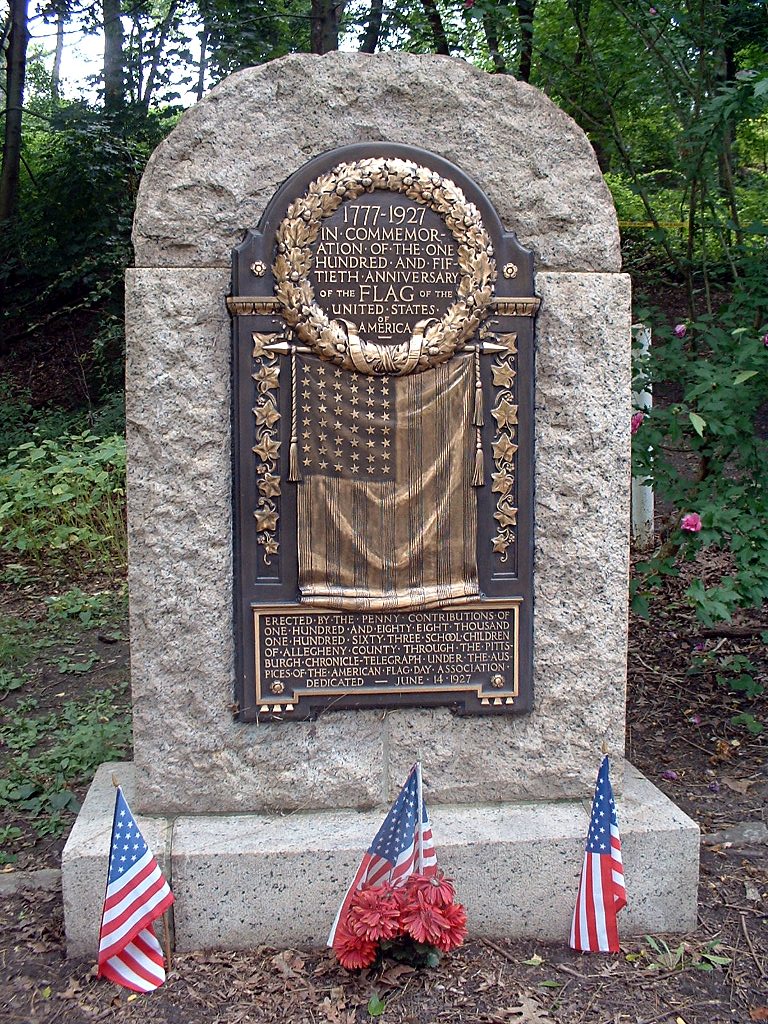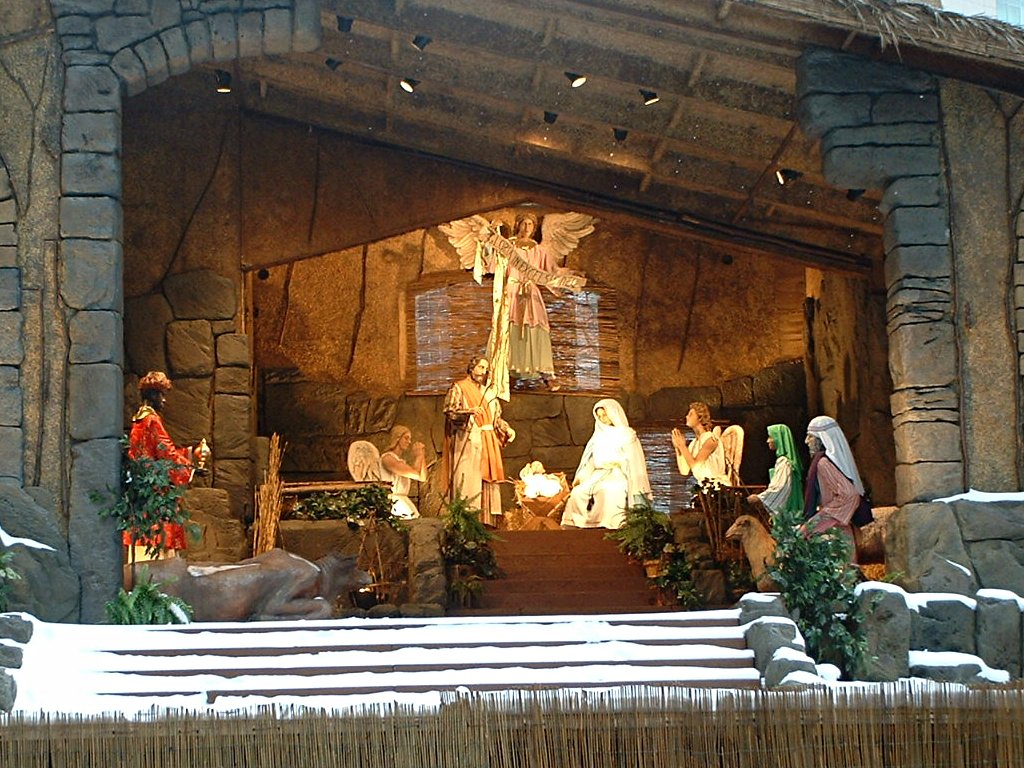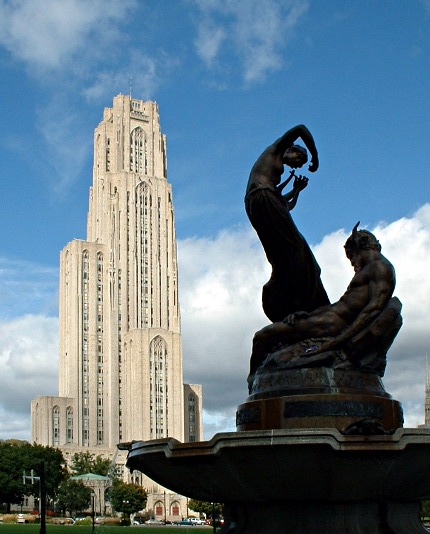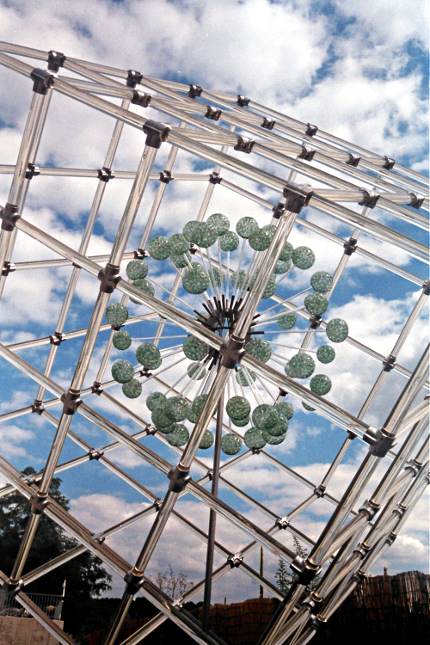
The Westinghouse Memorial has been splendidly restored, although the pond in front of it is drained and overgrown.
When George Westinghouse died, his reputation was at a low point—largely because of the constant attacks by Thomas Edison, who could never forgive Westinghouse for having been right about alternating current. But Westinghouse was beloved by his thousands of employees, whose contributions raised this treasure of American art. The architects were Henry Hornbostel (Pittsburgh’s favorite architect for decades) and Eric Fisherwood. The main sculptures were by Daniel Chester French, arguably the most famous American sculptor of all time. The panel reliefs were by Paul Fjelde.
This cast of Beaux-Arts titans could have made a heroic statue of George Westinghouse riding an air brake, but they decided on something more subtle. The monument is a beautiful allegory. An all-American boy (surely one of French’s best works) stands in the prow of a boat, his hat in one hand and books in the other, and learns about the incredible accomplishments of the genius Westinghouse, opened up in front of him like a scroll. You can read the wonder on his face, and in the careless way he crumples his hat, as if he had completely forgotten it was in his hand. (Notice how his sweater is pushed up from all that absentminded fiddling with the hat.) The message is clear: future generations will judge Westinghouse by his fruits, and they will be astounded.




















